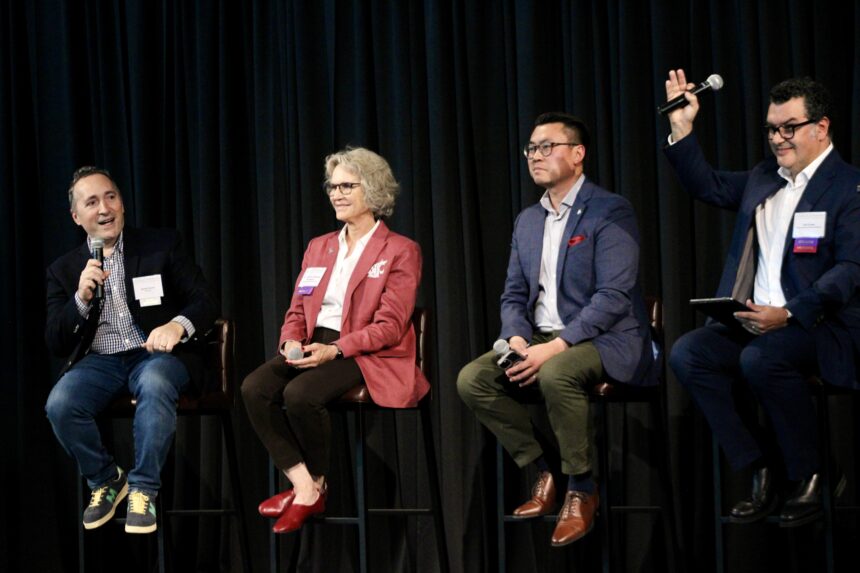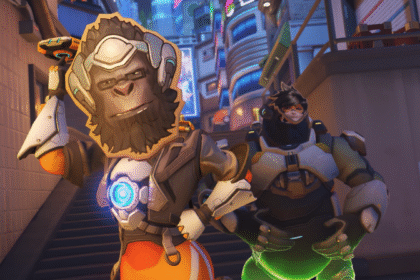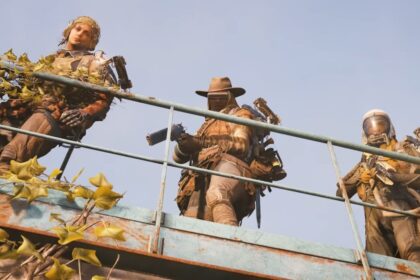Amid political polarization and uncertain federal research policy, Washington leaders are betting on stability through a unique innovation ecosystem rooted in the state’s institutions and businesses.
That was a theme at the 20th anniversary celebration of the Washington State Academy of Sciences, held Tuesday evening at Seattle’s Museum of Flight.
Founded in 2005 at the request of then-Gov. Christine Gregoire, WSAS serves as a nonpartisan, independent advisory body modeled after the National Academies, connecting scientists and engineers to policymakers across the state.
The event doubled as a reflection on two decades of science-based policy advice and a call to action for the future.
“This anniversary really coincides with a tremendous amount of change — change that maybe is unprecedented for those in our lifetime,” said WSAS President Allison Campbell.
The evening’s keynote panel, moderated by Allen Institute CEO Rui Costa, brought together leaders from academia, government, and industry to discuss the future of research and innovation in Washington state.
“When you see such turmoil happening at the national level, capital and leadership and talent are going to gravitate toward places that are stable and that are supportive,” said Joe Nguyen, director of the Washington state Department of Commerce.
Washington state’s combination of research universities, private-sector giants, and public institutions gives it an unusually integrated innovation infrastructure.
Nguyen, a former state senator and Microsoft senior program manager, noted his state’s deep roots in invention.
“We build shit,” Nguyen said, noting homegrown giants such as Boeing, Microsoft, and Amazon. “That is one of the key things we’re really good at.”
He pointed to the legislature’s move to establish a regulatory framework distinguishing fusion from fission energy — a change that he said paved the way for Helion Energy, one of the region’s hottest startups backed by the likes of SoftBank and Sam Altman, to begin construction on what could become the world’s first commercially viable fusion reactor in Wenatchee.
“Our unique value is that we can do things [that] other people think are impossible,” he said.
Elizabeth Cantwell, the new president of Washington State University, said she has already witnessed that culture firsthand.
“There’s nothing more glorious and glittering than being someplace that appreciates building stuff,” said Cantwell, who has a doctorate in mechanical engineering.
Cantwell, who previously led the Utah State University system, said she’s seen “genuinely impactful collaboration” between WSU and the University of Washington — rivals on the football field but partners in various research and education initiatives.
Babak Parviz, a veteran technologist and founder of Seattle mental health startup NewDays, described the region’s growing global footprint in artificial intelligence — powered by corporations as well as strong university programs, including the UW’s top computer science school.
“We intentionally moved back from Silicon Valley to be here, because we love to be here,” he said.
But Parviz warned that the state’s AI boom depends on continued investment in education and research.
“If academia is not there, we’re not going to be able to train the workforce that we need in the industry,” said Parviz, a former Amazon executive. “And a lot of the core research that’s needed to power the industry is going to go away.”
Washington is facing dual financial pressures with federal research cuts and a massive state budget deficit that is impacting higher education institutions.
Cantwell, who has spent decades overseeing research and innovation teams, emphasized the need to strengthen the pipeline between universities and industry, warning that the traditional model for funding graduate research is breaking down.
She urged companies to create long-term placements for graduate students beyond short-term internships.
“If you are in a company or corporate sector or anything like that, add two to three spots for graduate students,” she said.
Campbell, president of WSAS, said the academy can serve as connective tissue during difficult times.
“In times of change, there’s really a lot of opportunity,” she said. “That’s when leadership matters most, and that’s where an academy such as ours can really rise to the top and provide the leadership to help our state and our nation through these tremendous changes.”
Read the full article here










